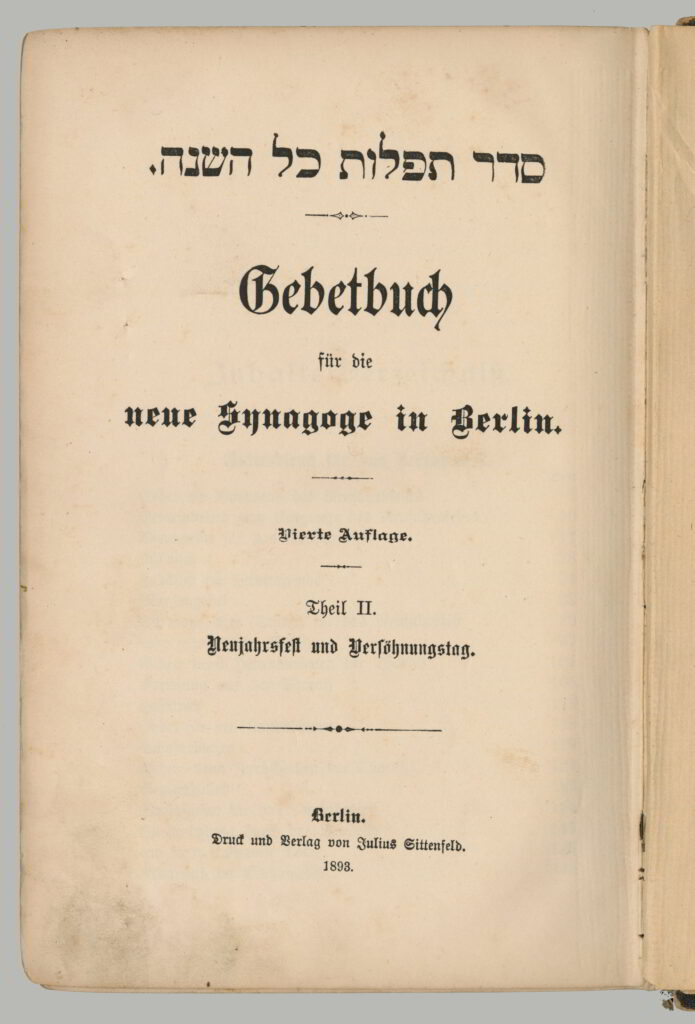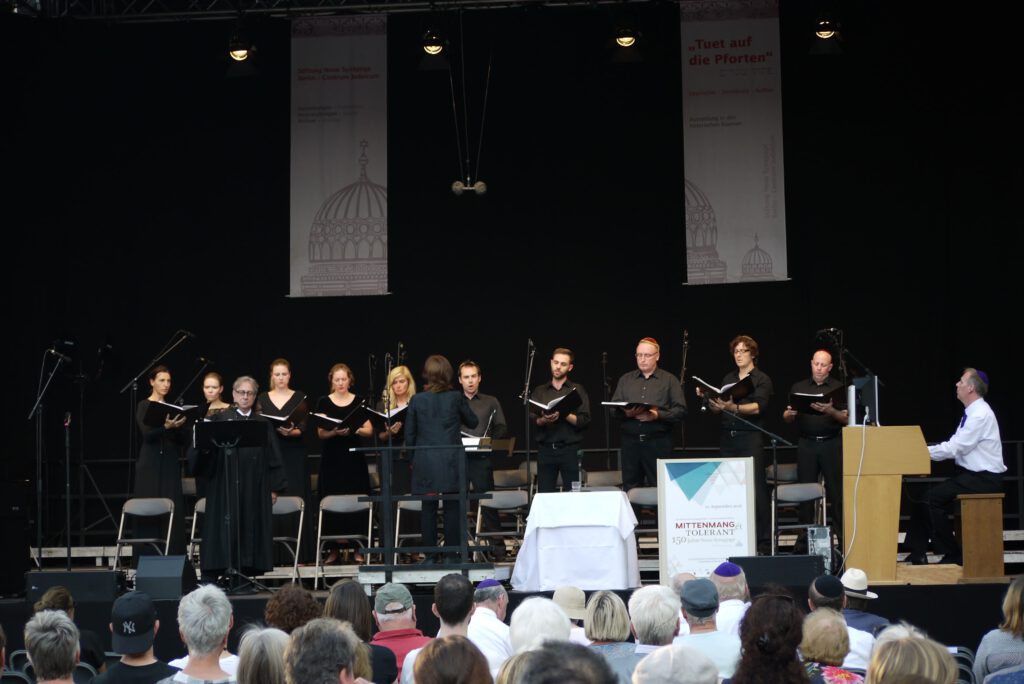Religious interpretation and practice in the New Synagogue corresponded to liberal Judaism, which became the dominant direction in Germany in the second half of the nineteenth century. This included various elements, such as the use of the German language in the liturgy, an organ and, since 1895, a choir, consisting not only of men but also of women; the women continued, however, to sit in the galleries, separated from the men, during worship services in the New Synagogue. In the 1920s, the Jewish community in Berlin was one of the largest in the world, boasting up to 175,000 members. The New Synagogue was one of the most important manifestations of liberal Judaism, which became the dominant force in many different forms in many countries, in particular in the United States (especially through migrants from Germany).


Left: A Siddur (prayer book) in Hebrew and German was published for the opening of the New Synagogue in Berlin. Here you see an edition of the also bilingual Machzor for Rosh Hashanah and Yom Kippur from 1893. Source: Centrum Judaicum, library
Right: „Mittenmang und Tolerant“ Celebration of 150 years of the New Synagogue in Berlin. The Synagogal Ensemble Berlin on September 11, 2016 in the open space of the New Synagogue. The choir, made up of women and men, still accompanies Lewandowski’s works with the organ during the service in the Pestalozzistraße synagogue in Berlin. © Centrum Judaicum, photo: Anna Fischer
Timeline Berlin
- ↑ A House Called Love – 1922
- ↓ Louis Lewandowski – 1876
